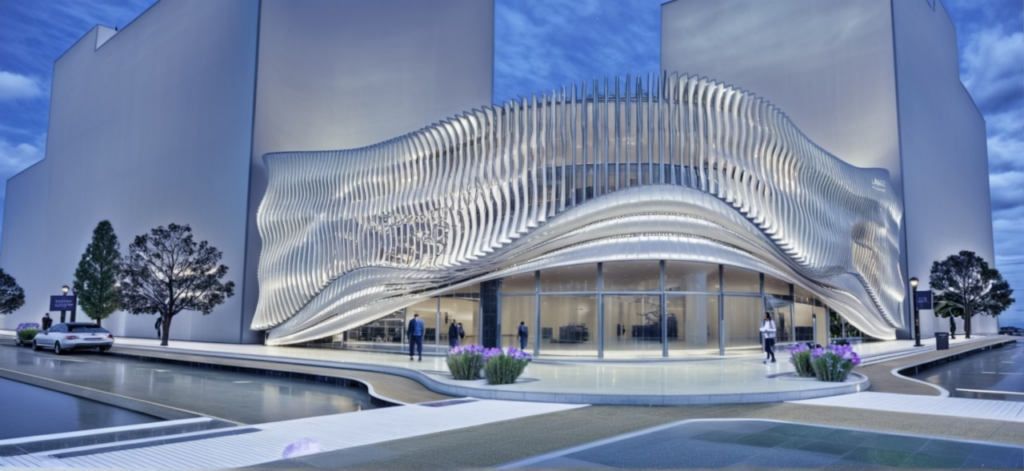FACADE
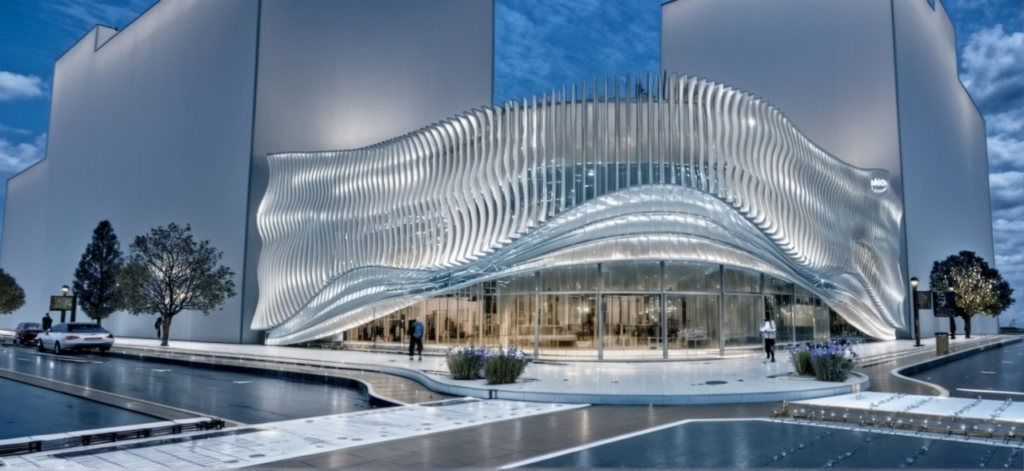
This project explores the integration of computational design and architecture to create a dynamic facade inspired by organic forms. The design features parametrically controlled vertical slats with wavy geometries, adapting to environmental factors like light and ventilation. Using Grasshopper, attractor points influence curvature, density, and transparency, enabling a responsive, visually striking structure. The facade emphasizes functionality, aesthetics, and sustainability, enhancing user experience while showcasing innovation in form-finding and parametric design logic.
REFERENCES
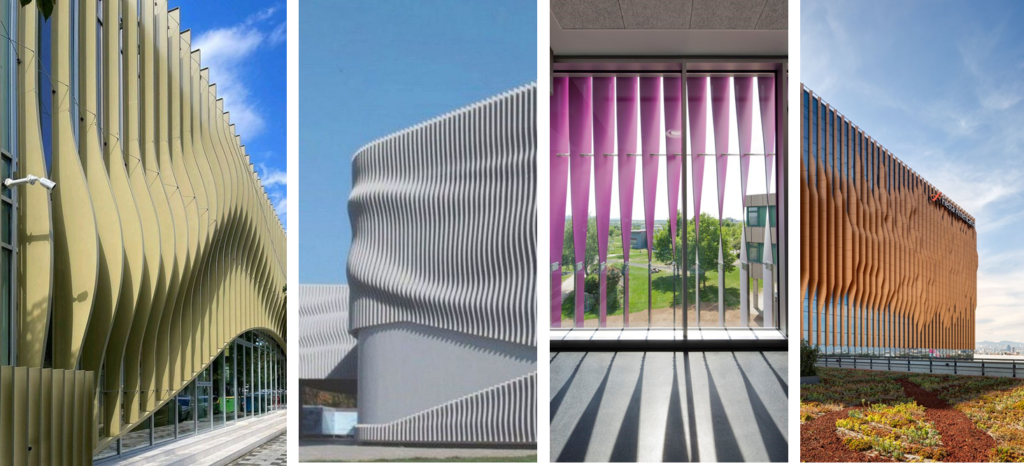
DESIGN COMPONENTS
The Ribbon
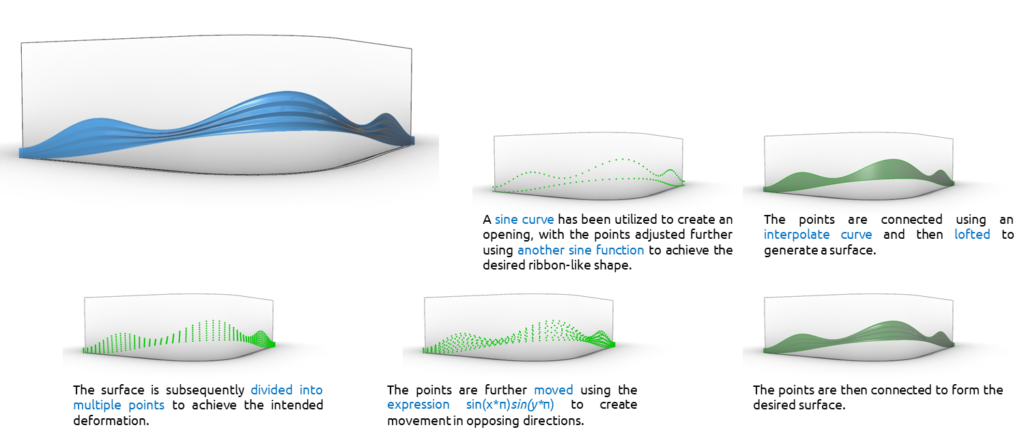
The Fins
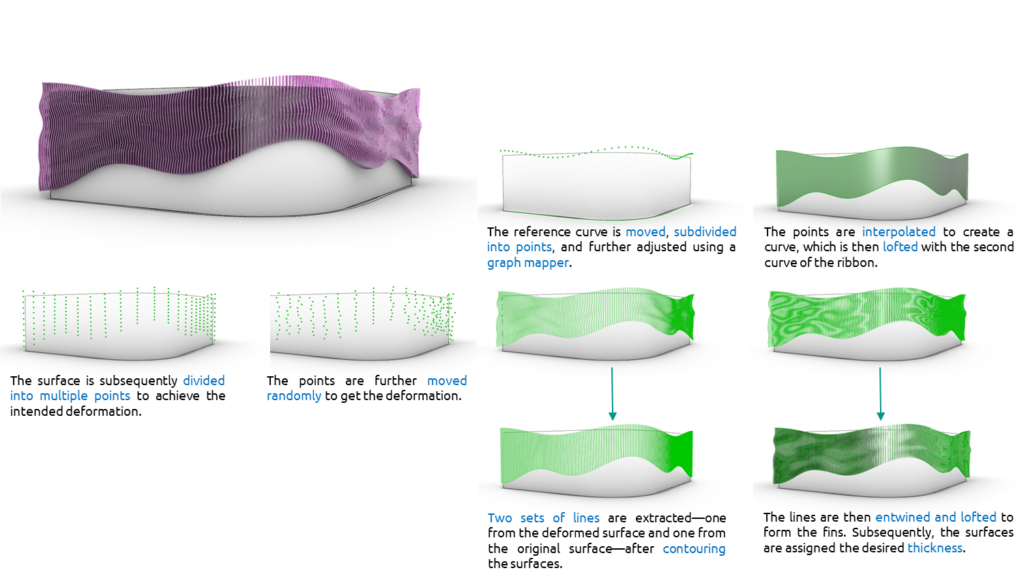
PSEUDO CODE
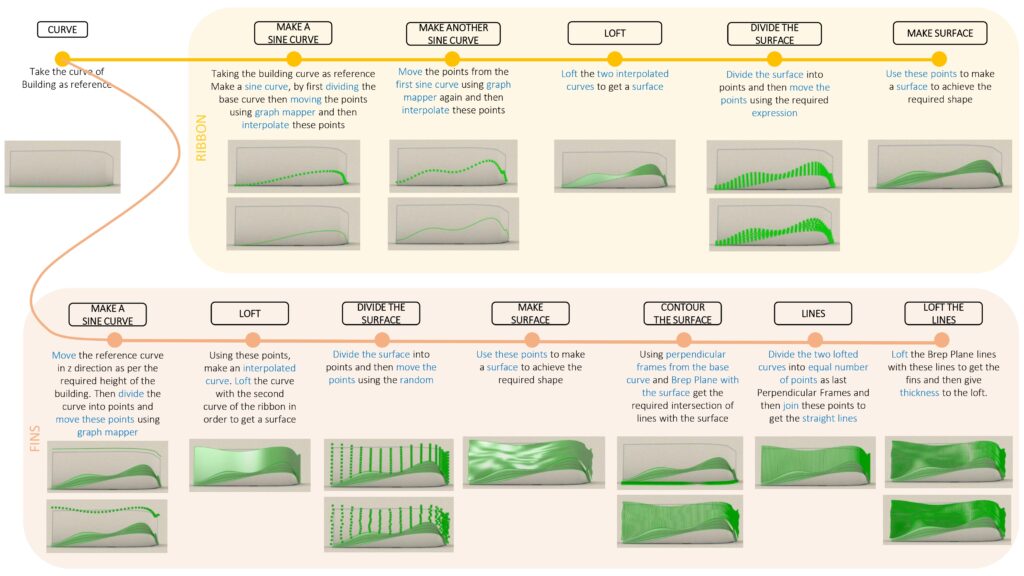
SCRIPT
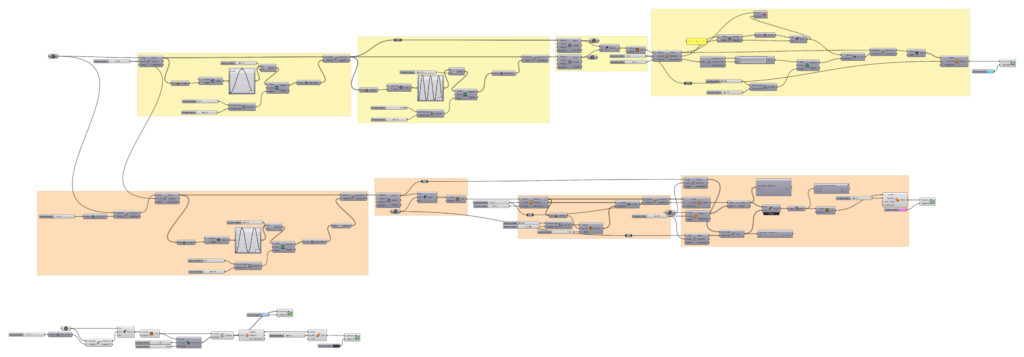

1. Dynamic Form Generation: The design uses waveforms or flowing geometry to create a sense of movement. This is achieved through mathematical functions, such as sine waves.
2. Structural Continuity: Vertical fins are arranged in a continuous pattern, providing both aesthetics and structural logic.
3. Response to Environmental Factors: The facade may react to sunlight, wind, or views (e.g., fins angled or spaced based on solar exposure).
4. Parametric Modularity: A modular approach allows control over wave amplitude, fin spacing, and density, offering flexibility for design optimization.
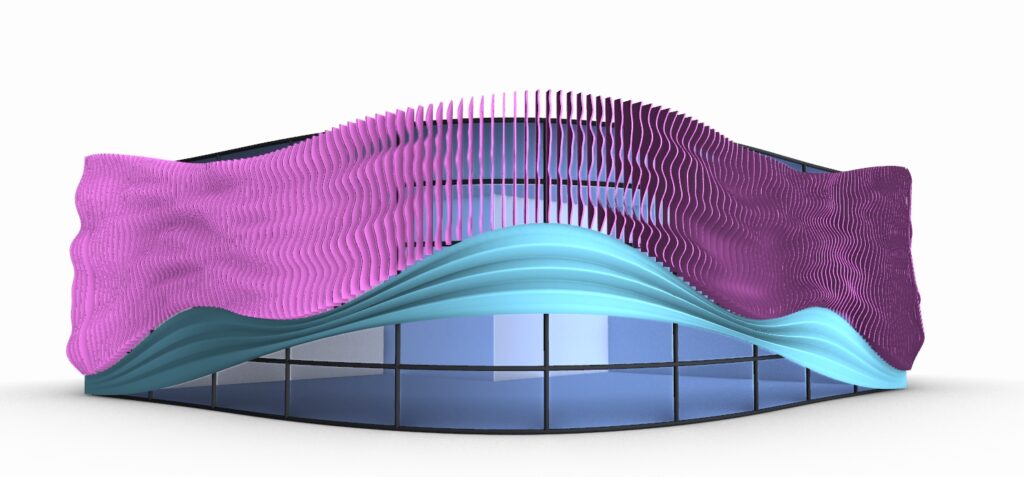
TRIALS

